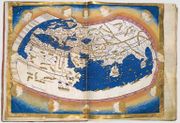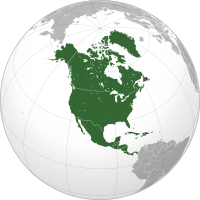Old World

The Old World consists of those parts of Earth known to classical antiquity and the European Middle Ages. It is used in the context of, and contrast with, the "New World".
The Old World includes Africa, Asia, and Europe (collectively known as Afro-Eurasia), plus surrounding islands (or at least those parts which were known to classical geography before the 15th century). The term is in distinction from the New World, meaning the Americas and Australasia.
The mainland of Afro-Eurasia (excluding islands such as the British Isles, Japan, Madagascar and the Malay Archipelago) has been referred to as the World Island. (The term may have been coined by Sir Halford John Mackinder in The Geographical Pivot of History.[1])
Medieval geography considered Asia as a continent – a distinct landmass. The European concept of the three continents in the Old World goes back to Classical Antiquity, but during the Middle Ages was notably due to Isidore of Sevilla (see T and O map). While this interpretation of tripartite continents (i.e., of Asia, Europe, and Africa) remains common in modernity, discovery of the extent of Africa and Asia have made this definition somewhat anachronistic.
See also
- Eastern Hemisphere
- Afro-Eurasia
- Eurocentrism
- New World
- Age of Exploration
- Far East
- Synoptic table of the principal old world prehistoric cultures
References
- ↑ See Francis P. Sempa, Mackinder's World
|
||||||||||||||||||||
|
|||||||||||||||||||||||||||||||||||||
.svg.png)
.svg.png)
.svg.png)
.svg.png)
.svg.png)

.svg.png)
.svg.png)
.svg.png)
.svg.png)
.svg.png)